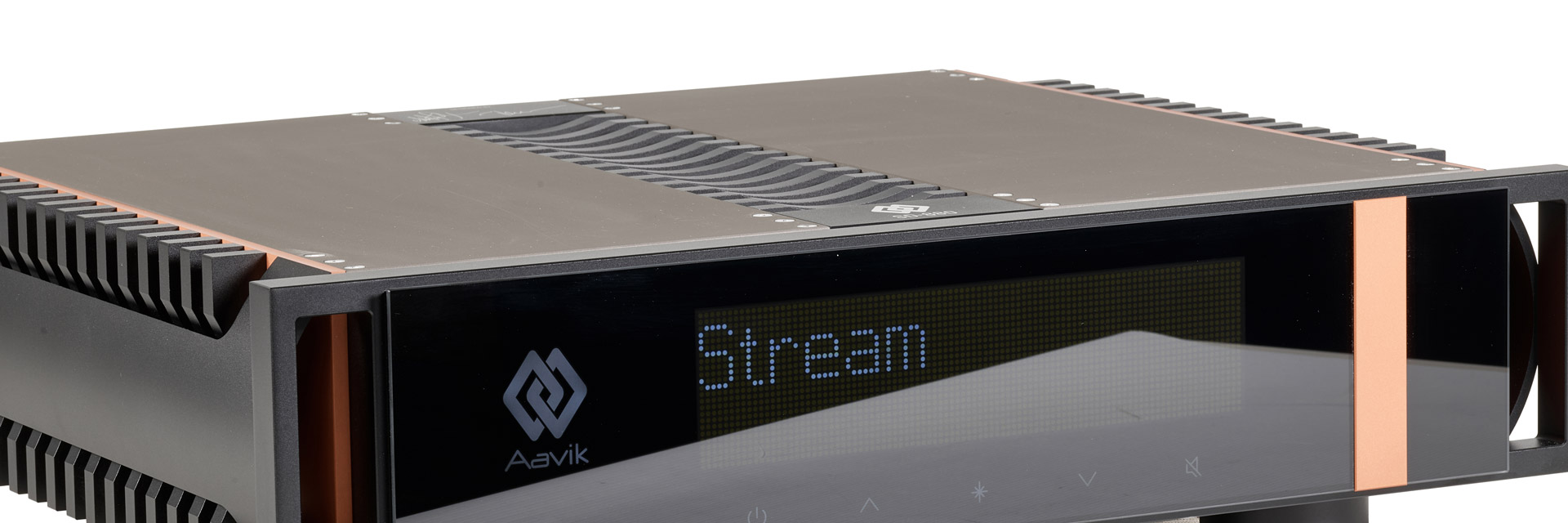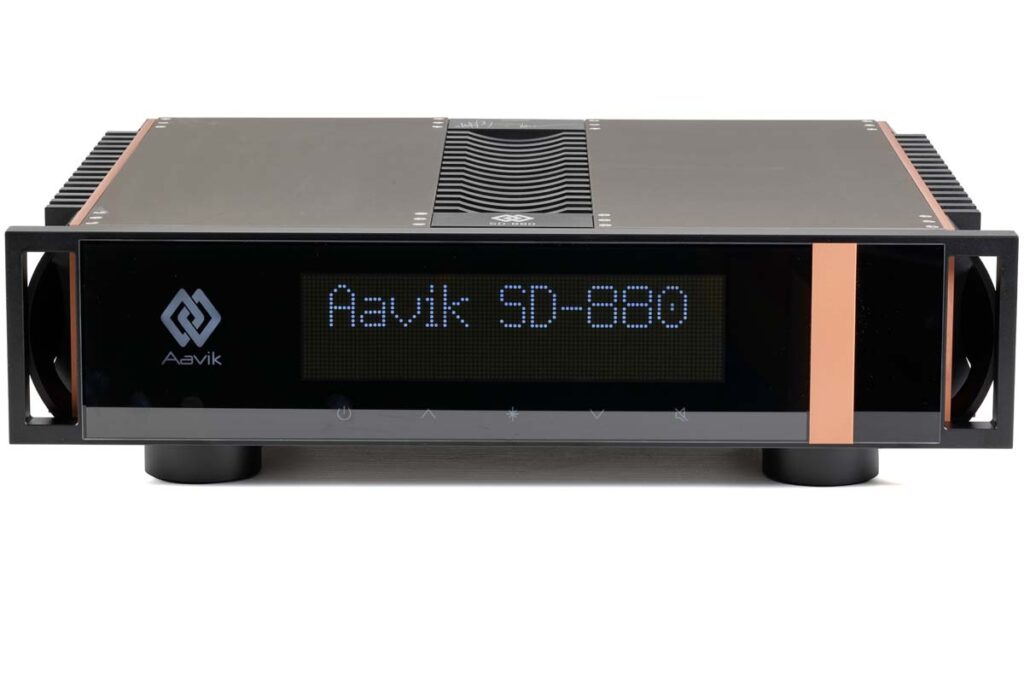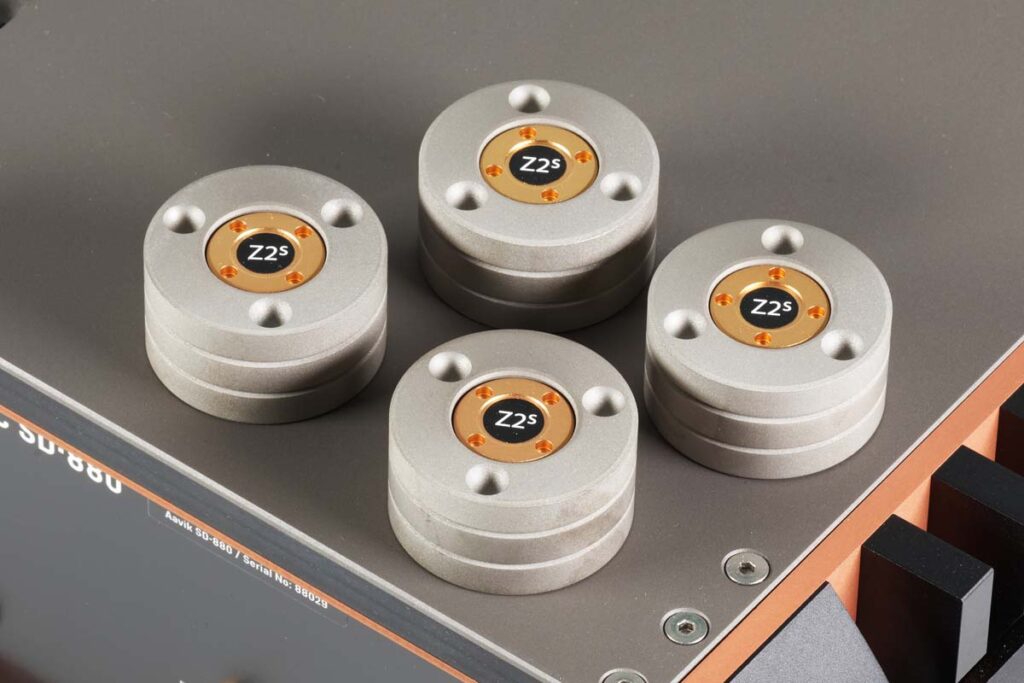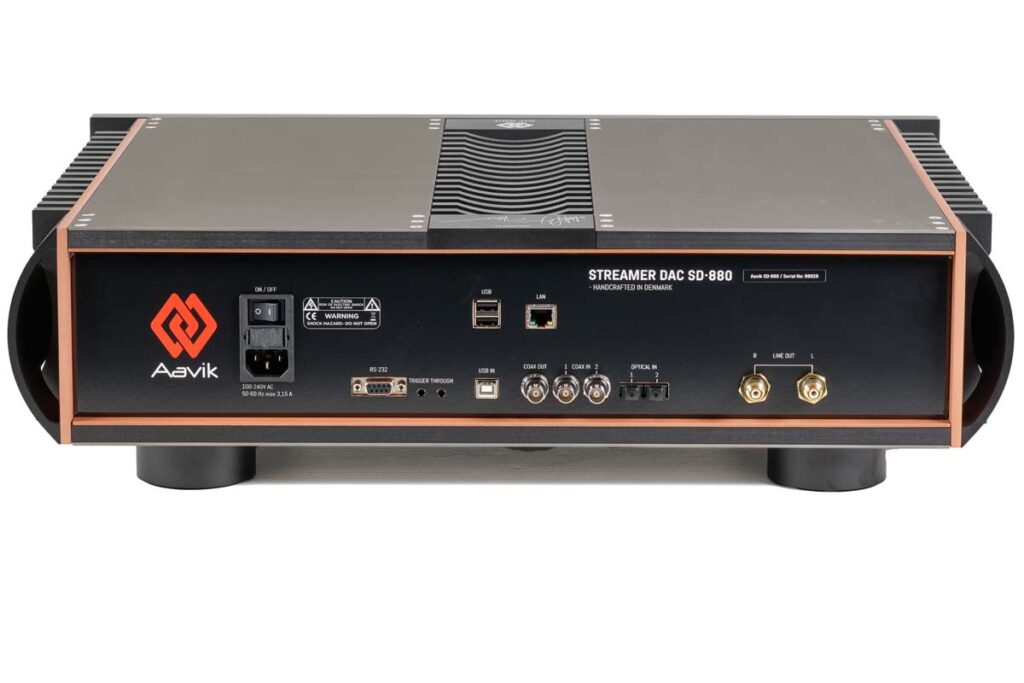Michael Børresen has done it again: rather than fall back on tried-and-tested concepts, he has found a completely new technological approach for his new Aavik SD-880 network player – and while he might be the only one who fully grasps it, we can attest that it works sensationally well.
Sometimes people can be on the wrong track for centuries, even though the answer is right under their noses. The existence of atoms, for example, was already postulated by the Greeks in ancient times; and yet mass used to be predominantly understood as a countless continuum well into the 19th century. It would take until the early 20th century for the atom to finally be recognized as the basic building block of matter.
Today, Michael Børresen is bucking the mainstream in a very similar way, albeit in the opposite direction. For thousands of years, we have intuitively understood that music lives from its flow, from the continuous variation of sound pressure and waveform. Nevertheless, we try to approach the musical truth in digital playback by chopping up a second into up to 768,000 miniscule points in time. Børresen does not, of course, reject the validity of this approach – after all, it is objectively and mathematically perfectly correct: the critical cliché of the “stepped wave” is a misunderstanding that can only happen to those unfamiliar with the Nyqvist theorem: Within the given bandwidth, there should ideally only ever be one possible waveform connecting all dots on the time axis.
Nevertheless, Børresen maintains that obsessive insistence on the greatest possible accuracy of the snapshot is not necessarily pertinent, as it makes you lose sight of the forest for all the trees, so to speak. According to him, musicality lies less in the moment captured with ultimate precision, but rather in tracing the continuous change of the signal as accurately as possible, which – as we have actually understood for thousands of years – constitutes the true core of music. And it is precisely in reproducing the change in the signal over time that a problem arises with conventional converter concepts: Nyqvist’s theorem only holds fully true as long as you can use a low-pass filter with an infinite slope – which, as we know, cannot exist. The gentler the filter slope, the more ambiguous the resolution of the waveform and the more distortion can creep into the signal. And we haven’t even started on the phase errors caused by the filtering…
Kilohertz rattle
… Nor do we now, because Børresen sees a completely different problem: processing 768,000 voltage values per second inevitably involves just as many switching operations in the same period of time, and these cause high-frequency switching noise – which can of course be filtered, but with all the associated negative implications. It is precisely in these switching processes that he sees the reason for the infamous “digital sound” and therefore declares war on them with his “Non-Switching Continuum Processing DAC”. The heart – and thus the secret – of the converter sits well-guarded in a shiny silver mu-metal box (magnetically shielded), which passes the music signal to the two analog output boards next to it. Although the details of the magic that happens here are admittedly beyond the comprehension of the author of these lines, it is essentially based on a very simple principle: the PCM signal is upsampled to an extremely high clock frequency of 22 megahertz and should therefore behave almost like a continuous signal – not entirely unlike a DSD data stream. The enormously high clock frequency, which incidentally corresponds to DSD512, also allows a certain elegance because each individual data point is summed from 32 samples: Since noise is random, it averages itself out of the equation. Basically, the process is therefore remotely similar to the well-known DSD conversion process – but where this causes copious amounts of switching noise due to its principle and shifts it into areas far above the human hearing threshold through noise shaping, the Aavik approach not only avoids this problem, but also ensures the “self-cancellation” of remaining noise components and quantization inaccuracies just described. What remains is a continuous bit stream that does not need to be decoded, but only needs to be smoothed to a modulated voltage in the output stage.
The art of simplicity
The conversion logic beautifully illustrates a design philosophy that runs like a red thread through the streaming DAC as well as through the Danes’ model range as a whole: Here, a great deal of effort and ingenuity is often employed to make signal processing path as simple and short as possible. This also explains, for example, why the SD-880 is a complete network player and not just a pure streaming transporter. The data stream should pass through all the necessary processing steps in the shortest possible way. A dedicated streaming bridge would have to pass its data to the DAC via a cable, which would therefore not only have to pass through two sockets, but also a cable that can actually cause jitter due to its inductivity – especially at the high HiRes frequencies. Børresen doesn’t think much of external clocks either – for exactly the same reason: “Digital signals don’t live well outside the enclosure,” he summarizes his attitude; in a recording studio where a dozen devices need to run in sync, a central clock generator can make sense – in hi-fi, on the other hand, the notoriously laterally thinking Dane sees no benefit. Another piece of studio technology that, according to Børresen, has no place in hi-fi is XLR connections: The problem that these solve basically doesn’t even occur in a home setup, and the realization of a balanced circuit is known to go hand in hand with an added component cost for no real advantage. All inputs and outputs – whether analog or digital – are therefore only available in coaxial versions in RCA and BNC.
Of course, all these efforts to simplify should not be confused with a desire to save money – the mighty housing dispels any misunderstandings before they can arise. When we look inside, we are only mildly surprised when we realize that the technology could have easily been accommodated in a much more compact form factor – but then the streamer would no longer have matched its series siblings visually. When I listen to music and look at the sculpture of the housing designed by Fleming E. Rasmussen, I can only approve of this design decision.
Captivating from the very first bar
Speaking of listening to music: When a component does something extraordinarily well, I often notice it by getting stuck on a seemingly irrelevant passage of a recording, ending up spending a whole little session listening to it over and over again via the test subject and some competitors. This is exactly what happened in the intro to “Shadows In The Rain” from the cover album The Sting Project by Jens Thomas and Christof Lauer in collaboration with the Norwegian vocal acrobat Sidsel Endresen. In the introduction, Thomas plings down a few short tone sequences on his piano, while Lauer playfully experiments with his alto saxophone, which is captured in this piece in a peculiar wide-panned manner: a conglomeration of blowing and flap noises, brief, explosive air decompressions and all kinds of other sounds spread across the entire left half of the stage. The SD-880 captures my attention even during this completely unmusical warm-up exercises by throwing it onto the stage with a fascinating combination of stupendous separation, finely chiseled textures and a vividly springy lightness. No other player in our listening room achieves this level of fine resolution. In direct comparison, it is among the somewhat slimmer-tuned source devices, but with its tight, springy bass quality it never lacks body: Sidsel Endresen’s voice is placed on the stage with all its proper volume as the piece progresses, as is Thomas’ piano playing, which gradually swells in energy.
The SD-880’s ability to assert itself in the lower registers is next put to the test with Mussorgsky’s Night on the Bald Mountain – and the impression gained so far is confirmed: one or two other players connected for comparison are a little more weighty in the bass, but offer nothing to oppose the control and transparency of the Aavik. The Dane easily retains full authority over the powerful dynamics at all times and keeps the stage as a whole and the individual instrument groups intact in an exemplary manner – even in the most explosive moments, absolutely nothing ever gets blurry.
Incidentally, the SD-880 also copes excellently with less audiophile fare: “Love No Genkei” from the album of the same name by Japanese rock band Ajico is one of those almost well-produced tracks whose sound design has a lot of interesting things going on, but which sounds a little flat and wooden overall. What the track doesn’t lack, however, is drive, and here too the tight bass performance of the Danish Wunder-converter comes to the rescue, vehemently driving the rhythm forward, neatly sorting out the sound clutter and remaining beautifully organic and smooth at all times. Looking for a phrase to summarize the essence of my listening impression of the Aavik SD-880, “organic transparency” springs to my mind: The network player paints with an impressively fine brush, yet never seems harsh or brittle, but rather, always keeps the music in an absolutely natural flow. Of course, I can’t say whether this is really due to the special conversion principle. As exciting as it is to know about this technological approach, in the end it’s the musical result that counts. And that is simply world class.
Accompanying Equipment
CD players: Accuphase DP-570, Audio Note CD 3.1x, Esoteric K-05XD | Network players/streamers: Lumin P1, Linn Klimax DSM, Auralic Aries G2.2 | D/A converter: Benchmark DAC 3B | Preamplifiers: Accuphase C-2300, Electrocompaniet EC 4. 8 Mk II | Power amplifiers: Accuphase P-7500, Burmester 216, Electrocompaniet AW 800 | Loudspeakers: PS Audio Aspen FR10, Nubert nuZeo 15, Manger c1, Wilson Audio Sasha DAW | Cables: WestminsterLab, AudioQuest, Atlas Cables | Racks: Finite Elemente, Creaktiv
Network Player Aavik SD-880
Concept: Network player based on a “Non-Switching Continuum Processing DAC” | Inputs: Ethernet RJ45, 2 x BNC (S/PDIF), 2 x Toslink, 1 x USB (asynchronous, UAC 2) | Supported sample rates: S/PDIF: up to 32 bit/784 kHz; Toslink: up to 32 bit/192 kHz; USB: up to 32 bit/384 kHz; DSD 64 to 256 native | Outputs digital: 1 x BNC (S/PDIF) | Outputs analog: 1 pair RCA (4.5 Vrms; 50 Ω) | Streaming standards: DLNA 1.5; UPnP AV1.0 | Special features: Tesla coils and dither circuits for noise suppression, Darkz device feet included | Dimensions (W/H/D): 51/16/58 cm | Weight: 33 kg | Warranty period: 2 years | Price: around €67,000
Audio Group Denmark
Rebslagervej 4
9000 Aalborg
Denmark
info@audiogroupdenmark.com
















